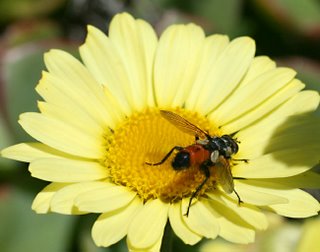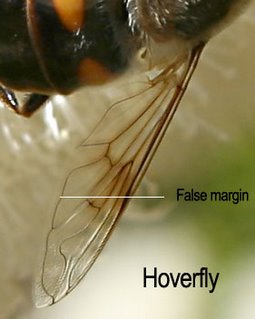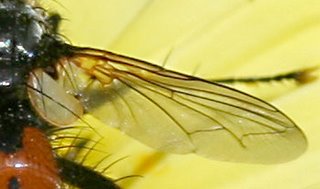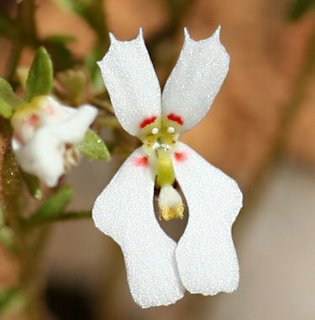I had the day from hell today, but had one brief spin around the garden. That's not as lacking in challenge as it sounds. The garden is an acre or so.
Anyway, cool sub 20 degree day today (my self-assessed standard is that bees and wasps are inactive here below 20 degrees) so I didn't expect to see many of my favourites - but true to form, asleep in
Alyogyne angulata, was this little darling. It is always the first bee I see in spring. The girls nest in solitary fashion in the gound. The boys (and girls that haven't built the nest yet) sleep in flowers, like Ciceley Mary Barker's flower fairies. Sometimes there will be two or three in the one flower.
The extraordinary thing is that they favour
A. angulata so particularly. I have several Alyogyne species, including the local
A. huegelii.
A. angulata is a recently described species from up Kalbarri way - at least 700 km away. So what does it offer that the other 3 species don't? I have no idea, but you'll always find them there while it flowers, and nowhere else.
This bee is probably from the family Halictidae, very likely a
Lasioglossum sp. it is minute, by measure of Tarlton Rayment, being only approx. 5-6 mm.
You can kind of see this if you compare to the size of the stamens - this is not a
large flowered native hibiscus.
Oh, and another thing - see all that pollen on this little tyke? Bees always have branched hairs on their body to trap pollen. While often not visible unless magnified, if an insect has pollen dusted on it like this - it's a bee, not a wasp!
OK, it's not the easiest, quickest method, but I don't think there is one. After all, bees are only vegetarian wasps.


















